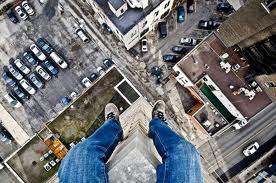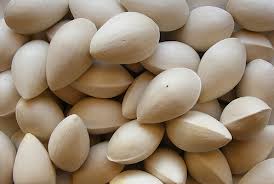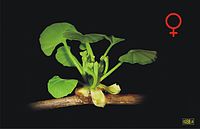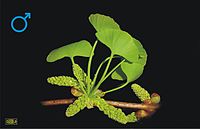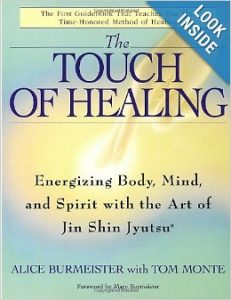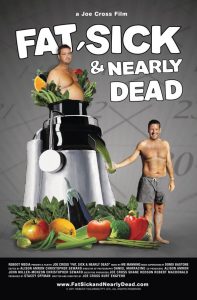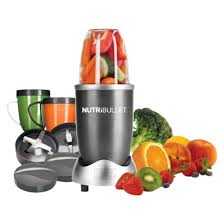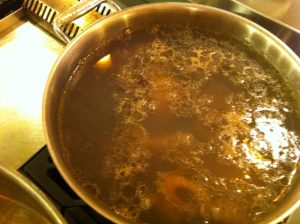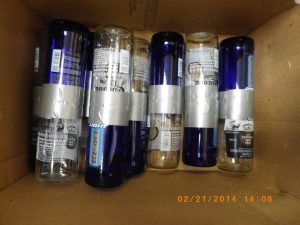Table of Contents
NATURAL HEALTH TECHNIQUES NEWSLETTER
March, 2014 Volume 10 Number 1 PDF
In This Issue:
- Health in the News: Mumps Outbreak, Listeria Linked to Cheese. Roundup Linked to Fatal Kidney Disease
- What’s New on the Website? We’ve gone mobile!
- Case of the Month: Dizziness/Lightheadedness/Vertigo/Meniere’s
- Product of the Month: Ginkgo biloba
- Media Reviews: (Book) The Touch of Healing: Energizing Body, Mind, and Spirit with the Art of Jin Shin Jyutsu
- Ask Dr. Moffat: Vertigo. Levothyroxine vs. Armour thyroid—which is best?
- Tips and Tricks for a Healthier NutriBullets, Life without Plastic Ted Talk. Cellulite Reduction Tips. Energy worker Shannon Green.
- Client Testimonials: Jin Shin Jyutsu referral. My pain is gone–THANKS. Cat obstipation resolved.
- Healthy Recipes: Bone Broth
- Inspiration & Perspective: Fake it until you become it TED talk by Amy Cudy
- What’s New at Our House? Bottle bricks and visions of alternative building projects.
- Local Events: Unraveling the Mother. Young Eagles free airline flights. Beginning Belly Dance
- In Memorium: Doc the dog
(Please note that full names are never used in this newsletter or on my website without the full consent of the sender or client. Some cases also encompass groupings of cases with similar symptoms and suggestions for healing in an attempt to educate the general public.)
Health in the News:
Mumps Outbreak: 28 cases so far at Ohio State University. Watch out for this one. https://www.reuters.com/article/2014/03/18/us-usa-health-ohio-mumps-idUSBREA2H26S20140318 Mumps is caused by Rubella virus. Virus Nosode Drops are the treatment of choice here at Natural Health Techniques. Note that most of you have the Viral Immune System Stimulator drops which will help some but not completely.
(March 3, 2014) 1 Dead, Babies Ill from Listeria Linked to Cheese
Michael and I were talking the day before this came up on the internet about cheese contamination. He mentioned the possibility of E. coli from the poo on the udders but I told him the biggest worry was Listeria according to my microbiology courses. Listeria it is.
As defined on the Center for Disease Control Website: Listeriosis, a serious infection usually caused by eating food contaminated with the bacterium Listeria monocytogenes, is an important public health problem in the United States. The disease primarily affects older adults, pregnant women, newborns, and adults with weakened immune systems. Babies can be born with listeriosis if their mothers eat contaminated food during pregnancy. Listeria monocytogenes is commonly found in soil, water and in mammals, birds, spiders and crustaceans. Animals can carry the bacterium without appearing ill and can contaminate foods of animal origin, such as meats and dairy products (raw or pasteurized), but raw veggies like sprouts can also be contaminated. Listeria is not passed through breast milk.
This particular incidence in the news had been in the news in August and November of 2013 but the CDC said there may be more cases. An ongoing investigation continues.
The contaminated cuajada en terron or fresh cheese curd, distributed from Roos Foods originated from Maryland and California. Roos foods cheese is sold under the brand names of Santa Rosa de Lima, Amigo, Mexicana, Suyapa, La Chapina and La Purisima Crema Nica. These products and more have been recalled by Roos.
Three of the illnesses were in newborns and two of the illnesses were mothers of two of the ill newborns. All affected were Hispanic says the CDC (although I don’t know what difference that makes).
The incubation period for Listeria is from 3-70 days. Symptoms, which can last from days to weeks, include fever, stiff neck, confusion, weakness, vomiting and diarrhea. Meningitis, endocarditis, and opthalmitis (swollen lymph nodes around the eyes) are less common symptoms. Exposure to veterinarians via animals that have aborted because of listeria are a concern to my own profession as a veterinarian but butchers are susceptible as well.
Treatment of Listeriosis: Penicillin, Tobramycin and Erythromycin are antibiotics used to treat listeriosis.
References for Listeria:
- Read the full story: https://www.cdc.gov/listeria/outbreaks/cheese-02-14/index.html
- Listeria and Food Safety: https://www.foodsafety.gov/poisoning/causes/bacteriaviruses/listeria/
- CDC and Listeria: Ref: https://www.cdc.gov/listeria/
Roundup Weedkiller Linked to Global Epidemic of Fatal Kidney Disease
Article posted on 2/25/14 written by Sayer Ji (Summarized by Denice Moffat)
“The mystery of what is causing thousands to die each year from a fatal kidney disease may now be solved, with evidence pointing to the world’s most heavily used herbicide, Roundup (glyphosate), as the primary culprit.” Sayer Ji
A new study published in the International Journal of Environmental Research and Public Health has proposed a link between the herbicide Roundup (glyphosate) and a fatal chronic kidney disease of unknown origin (CKDu). This study centered on poor farming regions around the world who have been using Roundup for a couple of decades now, but I suspect there could also be a correlation between Roundup and kidney dialysis clinics popping up in many new cities within the United States. Where did these clinics all come from? What accentuated the need for all the dialysis? It’s an epidemic!
This form of kidney disease has now killed more people in El Salvador and Nicaragua than the combined total deaths from AIDS, diabetes and leukemia over the past five years.
Roundup was indicated as the most likely culprit because it is the most commonly used herbicide and has only been used for a couple of decades so has had time to build up in the environment.
Glyphosate-Metal Complexes (GMCs ): The proposed mechanism is complicated but apparently Roundup is combining with heavy metals such as arsenic and cadmium in hard water or from fertilizers to make GMCs—diabolical chemically-induced complexes toxic to the kidneys.
Workers are exposed to glyphosate in the fields through skin contact or inhalation. They dehydrate working in the hot sun then drink untreated, hard drinking water which concentrates these complexes in the body. Roundup will not biodegrade for years when combined with hard water so is building up in the environment and in the bodies of people (workers and ultimately consumers) who end up absorbing or ingesting the foods sprayed with Roundup. This is bad—especially when Genetically Modified Organisms are being spliced into our grains so that we can spray the fields with copious amounts of Roundup and not harm the GMO foods. We’re ingesting this stuff!
This specific type of kidney disease is not associated with other risk factors of chronic kidney disease (diabetes, high blood pressure, glomerular nephritis or inflamed kidneys).
The use of glyphosate has been associated with other diseases as well and include:
- Aseptic meningitis
- DNA damage, cell death, and red cell damage (hemolytic anemia) in human cells
- Endocrine disruption (changes in testosterone levels and testicular morphology)
- Multiple myeloma
- Nerve damage
- Non-Hodgkin’s Lymphoma
- Parkinson’s like symptoms
- Rhinitis
- Vaccine induced toxicity (measles vaccine study)
Read articles about these studies on the GreenMedInfo.com database (https://www.greenmedinfo.com/toxic-ingredient/glyphosate)
Learn more about CKDu by watching these short documentary videos:
- Mystery in the Fields: https://www.youtube.com/watch?v=p9TE03HcBB4
- A Cycle of Death: https://www.youtube.com/watch?v=4c3kNNqfBDQ#t=106
- Read the entire open access study on CKDu: www.mdpi.com/1660-4601/11/2/2125
What’s New on the Website?
We’ve gone mobile! Helen Baldwin of W3Sights https://w3sights.com has updated the design of the site for iPad, iPhone and tablet use. Thanks Helen! We’ll be working on the newsletter as time permits so stay tuned. I can hardly wait, and this year I’ll be focusing on posting healing techniques—especially those you can do at home so be sure to stay tuned and check out this month’s Book Review on Jin Shin Jyutsu.
Case of the Month: Dizziness/Lightheadedness/Vertigo/Meniere’s
In the last few months I’ve seen a steep increase in the number of people experiencing the symptom of dizziness/vertigo. Epidemic! Most of those cases were tracked down to viral causes but it made me think that it would be helpful to just write this set of cases up, so here goes. . .
Using the proper terminology when discussing dizziness with your doctor could mean saving time and money with regards to the amount of tests needed to figure out the core cause of your symptom.
Let me give you a few examples of proper terminology.
- It has always bothered me when a client says they have a temperature instead of a fever (everything has a temperature—even a dead body!)
- A man has a prostate gland not a prostrate gland. Prostrate means to lay down on a horizontal surface.
- Vomiting vs. regurgitation: When a cat vomits it looks watery and green, when they puke up a loaf-looking thing of undigested food that is called regurgitation. Big differences. Different treatments. Regurgitation is usually associated with food allergies to grains, so often you can bypass all kinds of expensive tests and just get a grain-free food.
- In this article you’ll learn that dizzy, lightheaded and vertigo are symptoms. They aren’t diseases. There are many types of vertigo. Then we’ll add in Meniere’s disease and Old Dog Vestibular syndrome.
So, first we’ll go through some definitions, then some symptoms, then some medical treatments (some of which you can do at home and there are links to youtube videos for these) and then we’ll list some natural treatments. I use the list of treatments to muscle test and determine what exactly will work for you when you are a client of mine, but there should be no harm done to your body to try some of these out before you take that step.
Definitions:
Dizziness is defined as a disturbed sense of relationship to space: a sensation of unsteadiness with a feeling of movement within the head. Dizziness is more common in the 40-60 age category as a general rule.
Lightheadedness is the faint feeling which can precede fainting (syncope or passing out). Lightheadedness often goes away or improves when laying down. It can be associated with nausea or vomiting. Lightheadedness is usually not serious and is momentary and caused by a decrease in blood pressure, a decreased blood flow to the head and it is often associated with postural or orthostatic hypotension (getting up too quickly not giving enough time for the baroreceptors in the vessels to respond to the difference in heights). Lightheadedness can also result from allergies, colds, flu, genetic predisposition, vomiting, diarrhea, fever, dehydration, hyperventilation, anxiety/stress, tobacco/alcohol/illegal drug use, excess bleeding (heavy menses, occult bleeding), cerebellar hemorrhage, heart arrhythmias, some medications or decreased blood glucose.
Vertigo: The sensation that your surroundings are moving when they are not. Vertigo is accompanied by whirling, spinning, falling or tilting, lack of balance, trouble walking/standing and can be annoying or worse, life altering. It can be associated with nausea or vomiting as well. Vertigo is a symptom, not a disease. Vertigo can be classified many ways including:
- Benign Paroxysmal Positional Vertigo (BPPV)
- Central Vertigo
- Migraine-Associated Vertigo
- Objective vertigo
- Peripheral vertigo
- Psychogenic vertigo
- Subjective vertigo
Benign Paroxysmal Positional Vertigo (BPPV) is a type of vertigo is more common in women and can be associated with decreased cognitive function, facial muscle weakness. Tiny calcium particles (canaliths or “ear rocks”) clump in in the canals of the inner ear preventing the ear from communicating correctly to the brain when it comes to balance.
Central Vertigo involves disturbances of the brainstem or cerebellum involving the sensory messages to and from the brain thalamus. The most common cause of central vertigo is the migraine headache.
Migraine-Associated Vertigo is characterized by head pain with symptoms associated with vestibular impairment such as dizziness, motion intolerance, spontaneous vertigo, sensitivity to light and sound, tinnitus, imbalance, and spatial disorientation.
Objective Vertigo is where your surroundings move around you.
Peripheral Vertigo: Most cases of vertigo fit under this category. Peripheral vertigo is associated with the vestibular labyrinth or semicircular canal (inner ear issues) being affected by viruses, brain/brainstem or cerebellar injuries, stroke, brain inflammation or multiple sclerosis.
Psychogenic Vertigo: Lightheadedness due to anxiety (like in the Alfred Hitchcock movie)
Subjective Vertigo: feels like YOU are moving.
A disease associated with dizziness we should also discuss here is Meniere’s Disease.
Meniere’s Disease is a syndrome usually affecting one ear caused by the buildup of fluid or change in pressure in the ear (endolymphatic hydrops) and is associated with tinnitus and hearing loss or the presence of potassium in the inner ear in a place where it doesn’t belong. Meniere’s can also be caused by inflammation, metabolic disorders, bacterial or viral infections or immune disorders. Triggers can include stress, fatigue, overwork, emotional distress, illness, pressure changes and certain foods (salt, MSG, caffeine). Meniere’s can be preceded by an aura of symptoms such as increased tinnitus, the feeling of uneasiness, imbalance, dizziness and sound sensitivity. Because Meniere’s attacks are unpredictable in nature it is difficult to manage this disease. Finding the core causes are your best bet to prevent symptoms from manifesting.
Meniere’s disease is segregated into three stages ranging from mild to worst. Some unique symptoms which happen after a Meniere’s attack that differentiate Meniere’s from the simple symptoms of dizziness and vertigo include: anger, anxiety, appetite changes, clumsiness, cold sweats, concentration difficulty, fatigue, fear, groping for words, headache, loss of self-confidence, neck aches, palpitations, sleepiness, sound distortion and sensitivity, trembling, unsteadiness, vision difficulties (blurring, bouncing, depth perception, glare intensification), vomiting/diarrhea and worry. You may have noticed these symptoms are associated with quite a few medical challenges.
Inner Ear (Vestibular) Problems: A great example of this would be Old Dog Vestibular Syndrome where your older dog starts circling around and around in the same direction and can’t even eat or drink without falling over. This isn’t the end for your companion. Often the animal can accommodate with your help. Ask your local vet for help. I’ve found that Old Dog Vestibular Syndrome is often associated with the heart as every dog I’ve seen with this in the last 20 years have responded well to Cardio Plus protomorphogen. In veterinary school we learned that it had to do with the inner ear. Be patient. Hold food and water dishes up so the critter can eat without dipping their head down. They will accommodate after a few days.
Symptoms associated with Dizziness/Lightheadedness/Vertigo/Meniere’s:
Symptoms can last from minutes to hours, be sporadic, last sometimes weeks to months and be constant or episodic. Gee, that pretty much covers the whole gambit doesn’t it?
- Anxiety
- Decreased level of consciousness
- Diarrhea (associated with Meniere’s)
- Difficulty swallowing or moving the neck
- Disoriented
- Facial paralysis
- Fear
- Feeling of fullness in the ear
- Headaches
- Hearing loss
- Imbalanced
- Nausea
- Pulled in one direction
- Slurred speech
- Spinning
- Swaying
- Sweating
- Tilting
- Tinnitus
- Unsteadiness
- Visual disturbances (double vision or nystagmus)
- Weak extremities
Core Causes of Dizziness/Lightheadedness/Vertigo/Meniere’s:
It has been my experience over the decades that diseases are usually a combination of core causes. Diseases like this may have up to 8-10 core causes. Rooting out these causes can help the client manage or eliminate symptoms. Here’s a list of some core causes associated with this set of symptoms:
- Acoustic neuroma (tumor pushing against the nerve)
- Acute Mountain sickness (AMS)
- Age (older)
- Alcohol consumption
- Altitude sickness
- Anesthetic residual (post-op)
- Aneurisms
- Autoimmune diseases: Cogan’s syndrome, Wegener’s granulomatosis, systemic lupus, Sjogren’s syndrome, and rheumatoid arthritis
- Blood clots to the brain
- Brain tumors
- Calcium disorders
- Canaliths (ear rocks)
- Cervical subluxation of C1 or C2 (see your chiropractor for this one)
- Cholesteatoma erosion (skin growth behind the eardrum)
- Circulatory disturbances in the brain
- Diabetes
- Drugs: Anti-anxiolytics, Antibiotics (sulfa drugs, metronidazole, anti-tuberculosis drugs, vancomycin, telavancin), Antidepressants, Anti-seizure drugs, Blood pressure medicines can all cause lowered blood pressure which can lead to dizziness, Chemotherapeutic agents, Pain medications, Sedatives/Tranquillizers
- Foods too high in sugar or salt can sometimes trigger Meniere’s
- General anesthesia
- Head/neck injury (skull fracture)
- Hematogenic (leukemia of the labyrinth)
- Herpes zoster oticus (AKA Ramsay Hunt syndrome), an infection inside the ear
- High blood pressure
- High cholesterol
- Inflammation of the vestibular nerve from various causes
- Labyrinthitis (vestibular neuritis)
- Massages
- Medications that cause ear damage
- Medicines- Opiates
- Menopause
- Migraine headaches
- Motion sickness
- Narrowing of the vessels feeding the brain
- Neuronitis
- Otosclerosis (ear bone arthritis)
- Perilymphatic fistula (a tear in one or both membranes separating the middle and inner ear)
- Prolonged bed rest
- Stroke
- Syphilis
- Temporal lobe seizures
- Thyroid disease
- Transient Ischemic Accidents (TIA’s or mini-stroke)
- Vestibular nerve damage
- Viral infections inside the ear
Helpful questions your doctor or practitioner should ask you about your symptoms:
- Are the symptoms increasing in frequency?
- How long do the episodes last?
- Have they become more intense with time?
- How often do they occur?
- Have you had a history of any ear problems recently? In the past?
- Are you on any medications?
- Have you changed anything in your diet?
- Has anyone in your family had similar symptoms?
- What have you noticed triggers the symptom?
- Can you describe the sensation?
- Do you have any allergies?
Tests possibly needed to determine the core cause of Dizziness/Lightheadedness/Vertigo/Meniere’s
- Blood glucose test
- Blood work
- CT Scan
- Ear exam
- Head Impulse Test: https://www.youtube.com/watch?v=Wh2ojfgbC3I
- Heart rate
- Heart tests (ECG, Holter Monitor, Stress Test)
- MRI
- Romberg Test: https://www.youtube.com/watch?v=U5a4lbmwmOw
- Tilt Table Test: https://www.youtube.com/watch?v=5H5FZTAic7c
- Unterberger’s or Stepping Test: https://www.youtube.com/watch?v=XGUNTS_Z2UM
- Videonystagmography or Electronystagmography imaging test for nystagmus: https://www.youtube.com/watch?v=FVHbIu_1lD4
Medical Treatments for Dizziness/Lightheadedness/Vertigo/Meniere’s
- Canalith repositioning (special head/body movements to help move the calcium rock) https://www.youtube.com/watch?v=2Vajvoa4_wY
- Dix-Hallpike/Epley Maneuvre: https://www.youtube.com/watch?v=59EIKztATiw
- Medications—Tricyclic antidepressants: (Amitryptaline/Elavil)
- Epley Maneuvre (Note that 95% of patients with BPPV get better with this) https://www.youtube.com/watch?v=7ZgUx9G0uEs .
- Medications—Anti Anxiety meds (Valium/Diazepam) Phenothiazine (Prochlorperazine injections), Lorezepam (Ativan)
- Medications—Antibiotics: Gentamycin injected into the ear to destroy vestibular tissue
- Medications—Antihistamines: Betahistine HCl (Serc) outside the U.S. for Meniere’s
- Medications—Antinausea: Promethazine (Phenegran/Remsed), prochloroperazine (Compro, Procomp), Meclizine (Antivert, Dramamine, Bonine), Dramamine Less Drowsy (Meclzine HCl/Antivert)
- Medications—Diuretics
- Medications—Steroids injected into the ear
- Medications—Suppositories: Promethegan
- Surgery: A “dizzy” doctor is called a neurotologist. This type of medical doctor performs vertebral stabilization, bone removal and tumor removal. The goal of surgery is to relieve pressure in the inner ear and to destroy the inner ear and/or vestibular nerve to disrupt the balance information sent to the brain. Yikes!
- Treatment of underlying cause (heart disease, diabetes, or?)
- Vestibular rehab–training the other senses to accommodate—taught by an MD or Physical Therapist
Natural Treatments for Dizziness/Lightheadedness/Vertigo/Meniere’s:
- Acupressure Anti-nausea bracelets (sold at pharmacies)
- Acupuncture (2-3 sessions—works quite well especially when working the liver points)
- Avoiding prolonged head tilt positions (like holding the phone on one shoulder)
- Balance exercises (skipping rope)
- Biofeedback
- Cranio-Sacral therapy
- Deep breathing exercises to help with relaxation
- Ginger (for nausea, blood pressure, increasing circulation)
- Ginkgo biloba (to increase brain blood flow)
- Guided imagery
- Homeopathics to treat core causes (specific allergies, MSG detox, viral/bacterial components)
- Hypnosis
- Indian remedies: Almonds, Amla (gooseberry powder), Coriander herb, Lemon peel, Poppy seeds (Khus-khus), Strawberries and Yogurt, Watermelon seeds (these act as a diuretic so I’m assuming watermelon and parsley can also be used)
- Jin Shin Jyutsu (A hands on healing technique)
- Meditation
Helpful Links and References for Dizziness/Lightheadedness/Vertigo/Meniere’s:
- Meniere’s: https://www.medicalnewstoday.com/articles/163888.php
- Vestibular Disorders Association: https://vestibular.org/
- Old dog vestibular syndrome: https://www.vcahospitals.com/main/pet-health-information/article/animal-health/vestibular-disease-in-dogs/856
- Home Remedies for dizziness, lightheadedness, vertigo and Meniere’s: www.medindia.net/homeremedies/vertigo.asp#1xzz2uk/zpWNc
Product of the Month:
Ginkgo biloba
(Family: Ginkgoaceae)
Alias names for Ginkgo biloba: Smart Herb, The Living Fossil, GBE (Ginkgo Biloba Extract), Sacred Tree of the East, Bearer of Hope, The Coat Tree, Ginkgo, Maidenhair Tree, Yin Xing, Pinyin Romanization, Tree Hair of Venus, Bai-guo (seeds), Ginna (nut), Ginkyo
Ginkyo, its original name, was derived from the roots Gin = Silver and Kyo = Apricot. Possibly a clerical error changed its spelling? The Ginkgo tree is the only tree in this family it has been around for so long.
Pictures of Ginkgo biloba:
We purchase our seeds from Horizon Herbs to plant in 2014. They did look good enough to eat. They also sell the seedlings (plant above) https://www.horizonherbs.com/product.asp?specific=1052 Here’s a photo of the nuts (not the ones we purchased) They are about ½ inch in diameter and a bit rounder than a pistachio nut.
Wikipedia has great photos of the male and female ginkgo trees (seen below): https://en.wikipedia.org/wiki/Ginkgo_biloba
About Ginkgo biloba:
Known as the Sacred Tree of the East, the Bearer of Hope, the ginkgo tree has been around for over 2 million years and has been traced back from fossils to the Permian period. Charles Darwin called it a living fossil.
The leaves and nuts have been used in Chinese medicine for over 500 years. The Chinese used the nuts for urinary complaints and used the leaves as tea to help memory disorders. It has been called the Bearer of Hope because only the ginkgo tree was left standing after Hiroshima and the Chernobyl incidents.
Because brain cells contain a high percentage of unsaturated fatty acids in their membranes, they are very susceptible to free radical damage through oxidation. Active chemicals in ginkgo scavenge these free radicals making the cell membranes suppler so they can communicate better with one another. One study noted that even healthy people (students cramming for exams perhaps) have shown significantly improved test scores from taking this extract within an hour of taking their exam.
Vantage, Washington hosts the Ginkgo Petrified Forest State park which includes a museum featuring ginkgo trees. Watch out for rattlesnakes as you head down the path along the Columbia river: https://www.stateparks.com/ginkgo_petrified_forest.html
Historical Actions and Uses for Ginkgo biloba:
I had a stack of older research papers on Ginkgo from when I first became interested in alternative medicine twenty years back which I read and highlighted to build this page before heading to the internet. It amazed me how each paper focused on some of Ginkgo’s uses but did not mention others. It was quite the task to coordinate these historical uses for Ginkgo. Here is it:
- Absentmindedness
- Alzheimer’s (early stages)
- Antioxidant (powerful)
- Anxiety
- Asthma
- Atherosclerosis
- Brain trauma
- Bronchitis
- Bronchoconstriction
- Cancer
- Cochlear deafness
- Confusion
- Coughs
- Decreases bloating related to menstrual cycle
- Decreases capillary permeability (so it helps with edema)
- Delays early mental deterioration
- Dementia
- Depression (mild)
- Eliminates some parasites (historical use)
- Given after kidney transplants
- Headaches, migraines
- Heals arteriopathy of the legs (severe pain when walking)
- Helps regulate hormones (serotonin, muscarinic and thyrotrophin releasing hormone)
- Hemorrhoids
- Immune system modulator
- Impotence from poor circulation
- Improves tolerance to hypoxia
- Improves vascular integrity
- Incontinence (the seeds)
- Increases alpha wave activity (slightly decreasing theta waves)
- Increases blood flow
- Increases microcirculation by decreasing blood viscosity, erythrocyte aggregating and leukocyte rigidity
- Increases peripheral circulation (therefore decreasing asthenia–the feeling of heaviness, weakness and numbness of the limbs)
- Increases physical performance
- Increases RBC flexibility and flow velocity
- Inhibits arteriolar spasm
- Inhibits (PAF) Platelet Activating Factor’s antagonistic affects
- Intermittent claudication
- Lack of energy
- Leg cramps
- Mild relaxing effect
- Modulates damage from LDL cholesterol
- Multiple sclerosis
- Nerve injury caused from chemotherapy
- Neuropathy from diabetes
- Pancreatitis
- Parkinson’s disease
- Protects the brain from hypoxia and edema
- Radiation induced injury (nerves)
- Raynaud’s disease
- Regenerates damaged nerve cells
- Regulates blood flow (with associated slight increase in body temperature) to the brain, head, skin, limbs and female breast areas
- Relieves muscle pain
- Repairs damaged nerves
- Reperfusion ischemia following renal transplant
- Restores vigilance (wakefulness, watchfulness, arousal)
- Senility (beginning)
- Short term memory loss
- Strengthens capillaries and connective tissue structures
- Stress
- Tinnitus
- Tiredness
- Tones the sympathetic nervous system
- Ulcers
- Used for sepsis syndrome where the body reacts with inflammation, circulatory problems and shock
- Vertigo
- Visual improvement: Improves diabetic retinopathy, retinal insufficiency and macular degeneration
Parts of Ginkgo biloba Plant Used:
Ginkgo is a bittersweet and astringent herb. The leaves are used as a standardized extract (called EGb761) which contains 24% ginkgo heterosides (flavone glycosides) and 6% terpene lactones.
The 5-15 cm flat bi-lobed fan-shaped leaves are harvested in the fall after they turn a beautiful golden yellow. It takes 50 pounds of leaves to make one pound of extract! This process takes 27 steps and up to 2 weeks to accomplish. Most all the scientific studies (now well over 300 of them) in the last 30 years were done with standardized extract of Ginkgo but the seeds (nuts) and bark have also been used for various health issues for hundreds of years.
Chemical Constituents of Ginkgo biloba: Ginkgo contains some chemicals specific to ginkgo only. Ginkgo biloba leaf extract (EGB761) contains the active ingredients lactone derivatives (ginkgolides), ginkgo heterosides, bilobalides (also known as terpenes or terpene lactones) and flavonoids (flavonol and flavone glycosides). Ginkgo also contains 6-hydroxykinuretic acid, bioflavonoids, catechin, iron-based superoxide, isorhamnetin, kaempferol, protocatechuic acid, quercetin (also a component of onions), shikimic acid, sterols and vanillic acid.
Contraindications, safety issues, concerns, harmful drug interactions and allergy precautions for Ginkgo biloba:
Negative side effects from taking Ginkgo are rare but include mild headaches (which may last 2-3 days), gastrointestinal disturbances (stomach upset, nausea, diarrhea), skin hypersensitivity/ dermatitis (much like the blisters you get from poison ivy) and increased bleeding times.
I read on one pharmacy website that “the ginkgo seeds contain a potentially toxic substance, ginkgotoxin (4-O-methoxypyridoxine), which has anti-vitamin B6 activity and inhibits GABA formation, which can potentially lead to convulsions and loss of consciousness” but I don’t know how many seeds you would have to eat for this to happen. This seems strange since the seeds have been eaten as a food and as medicine (breathing problems and urinary incontinence) in China for thousands of years. You’d have thought they would have figured out this toxic symptom after all those thousands of years. Hmmm. At least the person wouldn’t wet their pants while in convulsions, right? (Reference: https://www.clevelandclinicmeded.com/medicalpubs/pharmacy/sepoct02/ginkgo.htm) OK, I’m just funnin’ with you. The antidote to toxic symptoms would be Vitamin B6.
Harvest the seeds wearing gloves, roast them outdoors and don’t eat more than 5/day for safety reasons.
Seriously though, if you are on blood thinners, antiplatelet therapy, NSAIDS (which are also blood thinners) or MAO antidepressants you may want to check with your doctor or herbal practitioner before taking Ginkgo. This herb is safe for pregnant and/or lactating women.
Cultivation of Ginkgo biloba:
Ginkgo biloba is a beautiful ornamental tree which grows up to 100 feet tall and 27 feet wide and living over 1000 years. It takes both a male and female plant to create the seeds (nuts) which are produced on the mature female tree. The male trees are more columnar and narrow. The females have a wider crown at the tree’s top. Ginkgo grows most prominently in the southern and eastern United States and was originally brought from China.
Gingko is propagated via seed harvested in autumn or from softwood cuttings in the spring. It can also be propagated by side veneer grafting in the winter. I didn’t know what side veneer grafting was so I looked it up: https://grow.ars-informatica.ca/grow_topic.php?subject=gra4 I suspect they use this technique for reviving bonsai trees. The ginkgo is a popular bonsai plant.
Ginkgo likes fertile, heavy, moist, well-drained soil. Grow in full sun given ample room. I’ve read that this tree will die back if pruned and it does not like its roots disturbed so be gentle when you transplant the seedling.
A horticulturist once told me not to plant a female ginkgo too close to the house because when it buds out in the spring it really stinks. I had to check this out of course so I googled it. One person said the unripe seeds smell like dog excrement or some kind of noxious, acidic pungent soft cheese. Great. I’m hoping to relate that as a personal experience from our food forest plantings at our home at Elk Meadow Farm & Nursery here in Idaho. We won’t plant it close to the house. This plant is best for zones 4-8.
Helpful Links and References for Ginkgo biloba:
Media Reviews: (Book)
The Touch of Healing: Energizing Body, Mind, and Spirit with the Art of Jin Shin Jyutsu
By Alice Burmeister with Tom Monte © 1997
Book Review/Summary by Dr. Denice Moffat
Many years back when I first started reading books about healers and healing techniques I ran across an excellent book, Born to Heal © 1973, about a man Ruth Montgomery called Mr. A. He preferred to be called Mr. A because he was 77 years old at the time the book was written and he didn’t have room in his schedule for any more clients. Ruth became quite taken with this miracle healer as he placed his very hot hands on different parts of the body charging energy into areas. He talked about his body being the battery and his hands being the jumper cables. His patients recovered from every health concern you can imagine with just a few “chargings”.
Well, I was hooked, but what was this technique? I’ve spent the last 20 years trying to figure it out. I’ve taken many classes on energy medicine and have achieved a certain degree of expertise in some but I never ran across this particular technique until a few weeks ago. I finally figured it out. It’s call Jin Shin Jyutsu. One of my clients was taking the class. I asked her if there was a book on the subject. “Yes, it’s called The Touch of Healing: Energizing Body, Mind, and Spirit with the Art of Jin Shin Jyutsu by Alice Burmeister with Tom Monte.”
I went on line as soon as we hung up and ordered a copy.
Yep, this is the technique. They use some unique terminology I had not heard used with any other technique. There was the battery and jumper cable description.
Jin Shin Jyutsu is an ancient Japanese practice that balances your body’s energy by using the fingers and hands. The technique was lost for centuries until a sage named Jiro Maurai came along. He noticed that subjects within spiritual and devotional paintings placed their fingers and hands in certain positions. He dedicated his career to figuring out what these hand positions meant. His research ultimately revealed that each one of our fingers affects 14,400 functions within the body. Near the end of his life he feared that his work would again be lost for centuries until he met a woman from America, Mary Burmeister, who he felt would carry his work on. Mary brought the technique to the United States around the 1940s.
Jin Shin Jyutsu is used to eliminate stress, create emotional equilibrium, relieve pain and alleviate acute or chronic conditions. The technique involves learning 12 Organ Flows, 6 Depths associated with dimensions of being, 3 Trinity Flows, and 26 Energy Locks. The book describes how the organs flow with energy, includes daily sequences to practice and delves into basic first aid and on-the-spot healing with Yin Shin Jyutsu.
Jin Shin Jyutsu is a simple technique that anyone can do at home by merely touching certain parts of the body (your own or someone else’s) using the hands and tips of the fingers. The body collects energy from the ethers (God) and transfers that energy through the body (the battery) and out the hands (jumper cables) to recharge and balance out these points. Contact is made until pulses, buzzing, heat, or cold balances out between the two points being held before moving on to the next set of points.
The Touch of Healing is clearly written and is filled with easy-to-understand drawings and explanations as to how and where to place your fingers and hands on the body. What I loved most about the book is that it teaches a technique and then follows it with a story of healing having to do with that one hand placement. It makes for interesting reading. I will say that the index of this book is a bit lacking. I hate that. Oh well.
I suspect this technique was taught to the soldiers on the battle field in World War II. I remember another audio reference that sounds like this technique described by Dr. John Upledger (developer of the Cranio-Sacral Technique). In the program (Energy Medicine a 6-tape series by Sounds True,) Dr. Upledger shared that medics in the war were given a tiny little book of acupressure points/holds or something like that to use on soldiers who had been hurt in the field. These techniques were to be used for pain control when they could not transport the soldier back to the base for medical care. It sounds logical to me that this little book contained the ancient wisdom talked about in the other two sources.
The Touch of Healing describes dozens of exercises for specific ailments and general well-being including techniques for balancing cholesterol, blood pressure, asthma, allergies, back tension, menstrual pain, depression, stress relief, constipation, hiccups, muscle cramps, headaches and even what to do when you are stung by a jellyfish. What attracts me most though is that this technique can be used for chronic pain. It’s something that people in pain can do when the medical system fails them. We need more of these techniques.
I’ve watched a few videos on YouTube since reading the book and it seems very do-able and easy and doesn’t take that much time. Check out the book and watch some videos and let me know how it goes for you. Once you google the key words and watch a video, other links will pop up on how the technique is done at home. I’ve listed below the ones I’ve explored so far.
Right now I’m working with the energies on clients by muscle testing which techniques in the book to use and then I determine for how long to use it. I sometimes will invoke the Law of Similars (from long distance Reiki treatment techniques) and work on the photo clientsk have sent me. Kind of exciting. We’ll have to see where it leads.
Helpful Links and References for Jin Shin Jyutsu:
- The Jin Shin Jyutsu organization (for classes or to locate a practitioner): https://www.jsjinc.net/
- Video clips about Jin Shin Jyutsu: https://jinshininstitute.com/video-clips/
- Jin Shin Jyutsu and cancer treatment (8-min video) https://www.youtube.com/watch?v=99nrmCufq_c
- 5 minute Jin Shin Jyutsu revitalization technique: https://www.youtube.com/watch?v=cdZbxcoipSQ
- Exercise with the Mudras: https://www.youtube.com/watch?v=uvqvIn-kGOw
- Balancing the energy centers of the body: https://www.youtube.com/watch?v=mi6tRh1yJpc (a Jin Shin Jyutsu demonstration)
Ask Dr. Moffat:
Hi, Denice…I forgot to mention that since my surgery, and also several other times during the year…perhaps during allergy times, but sporadic, so I haven’t seen a correlation to anything specific yet, I have been experiencing strong vertigo…when I lay down at night, and of course get up in the morning, and/or when I turn my head quickly one way or the other when laying down. Also, if I put my head down low from a standing position, of course, ie. to brush a horse or put a pot in a cupboard, tie shoes, etc. It has been especially strong since my knee surgery. At first my husband thought it may be residue from the anesthesia.
Anyway, it is very annoying…any ideas on that? Is there something I can do about it? I feel like I’m drinking plenty of fluids. I don’t have any cold/sinus symptoms, just occasional allergy symptoms, I’m guessing mostly from molds. We had LOTS of rain during my surgery so that may have activated something… Bonnie
Dear Bonnie. It’s interesting to note that many of my clients are having the similar issues right now and have been for several months—so much so that I’ve created a handout on this. I think you may find it interesting. Sending the link: https://naturalhealthtechniques.com/dizziness-lightheadedness-vertigo-menieres.htm
But, asking your guides and mine and testing from the list of core causes, you’re testing you have:
- 40% viral issue,
- 40% vein issues, and
- 60% subluxation issues
I know this adds up to over 100% but I think the subluxation is affecting the veins and so is the virus. You’ve recently had your To Do List updated so that should help with the immune issues (virus and allergy) but I think you should go see a chiropractor (or Bowen therapist) for the neck issue. That should help your memory and brain function as well (which we’ve addressed in the past) along with any extra tiredness you’re experiencing right now too. Denice
Hi Dr. Moffat, I’ve been enjoying your Facebook postings and I hope everything is going well for you. I’m hoping you’ll be willing to answer a question for me. I switched to Armour Thyroid in April and tried to adjust the level myself based on symptoms. Well, I finally got my temp up to being around 98.6 regularly in the afternoons, so I had my MD test me. She only tested for TSH and T4. The T4 was under the normal range (normal range 4.5-12.5) and my TSH was 66.82! (normal range 0.5 – 5.5) Overall except for anxiety and dry skin and continuing fatigue (although not so bad as before), I’m feeling better, so I’m mystified at the results. My question is: Which of levothyroxine or Armour is better for me as an individual? I think there are people who are “religious” on the topic and it’s hard to get beyond that to figure out what’s best for oneself. If you can give me a definite answer on this, I’d appreciate it. I hope the question’s not oversimplified. Thank you, A.G. in Sunny CA
Dear A.G.: Wow that is quite a bit out of the normal range! I’m muscle testing that levothyroxine is the best thing for your body though. And you’re testing you need 30 mcg/day (taken at 7am is what I’m getting—some of the latest recommendations on taking thyroid meds are to split them up and take them twice daily but your body doesn’t like that.)
I don’t really have an opinion on one product over the other. I believe one should take whatever works for them and then stick with that same brand (even though the dosage may change over the years). It should work with the other supplements, homeopathics and medications you’re currently taking. I have numerous clients taking one or the other and they find THE product which works for them. I hope this answer helps you.
I think you should have your doctor explore why you are so far out of the normal range, but you didn’t share how much you were taking and I don’t really have enough to go on. What other things have shifted since our last consult? Other thyroid tests are in order here I suspect. You may also want to take a stabilized dose of the Levothyroxine for 3 months and then go in for another blood test to see if you’re in the correct range. It’s kind of stressful on the body to shift back and forth from dose to dose on your own and it takes several weeks for the body to come to equilibrium with thyroid meds. We’re dealing with a hormone situation here so adding and taking away too quickly really doesn’t work optimally for the body. Consistency of the proper medicine is the key. Hope all is well. See ya on Facebook. Denice
Hi Dr. Moffat, thank you for your answer. I was starting to suspect that the Armour wasn’t right for me, especially since levothyroxine seems to work fine for my mother and sister. Best regards, A. G.
Dear A. G.: Excellent deduction my dear Watson. Most often the efficiency or side effects of a drug are exhibited similarly within members of the same family. Let me know how it goes for you. Denice
Tips and Tricks for a Healthier Life
NutriBullets are on sale right now at Costco. Michael and I just purchased one because many of my clients told me how easy it was to clean. Totally correct! And you get the fiber as well. We love it. Check it out here: https://www.nutribullet.com/
Plastic Trash: The average American generates 100 pounds of single use plastic each year. What would it be like to actually just say NO to plastic wrapped stuff? This woman gives a TED talk on that very subject: https://www.nextworldtv.com/videos/reducing-waste/living-without-plastic-can-we-do-it.html We’re trying to cut back on the production of plastic trash around here. It’s my personal goal to repurpose more trash than I’ve generated in my lifetime. Michael is finally on board with my idea of using used tires to make retaining walls. That should repurpose a bunch of petrol product all at one time.
Cellulite: This tip for cellulite reduction was sent to me by one of my favorite energy workers Tara Howe. Thanks Tara. https://cellulitehowtogetrid.com/top-3-exercises-to-lose-cellulite-on-thighs/#axzz2TWY5a7yx
Energy Worker: Shannon Green is opening her phone lines. People often ask for me for referrals for things I can’t or no longer do. This is a friend of mine. Totally awesome! Very talented.
Shannon Green, Intuitive Energy Practitioner is providing multidimensional services such as spiritual readings for humans and pets, pet communication, lost pets and persons, past life regressions, energy & chakra balancing, and spiritual counseling. Shannon has a Master’s Degree in Counseling Psychology and is now expanding her practice to include the esoteric realms. Shannon is also a trained hypnotherapist, Yi Ren Qigong & Reiki Practitioner. She tends to be humorous, gentle and yet straight to the point. To read more about her services please take time to visit her website at: www.HighestSelf-Awareness.com or contact her at 714-363-7333, Email: highestselfawareness@gmail.com
Client Testimonials:
Denice: Had my first Jin Shin Jyutsu treatment today. Susan was a good choice. She started by taking my pulse and determined that my liver/gallbladder needed help. Then took my pulse again. Then she said, “I’m hearing that that’s enough for today.” Then she said “no, we’ll work on the heart.” She showed me the diagram of the heart flow and it seems to coincide with the alignment problems I’ve had. The gallbladder, she said, is caused by frustration. I forgot to ask her who was talking when she said “I’m hearing.” She said she’s “hearing” three sessions for me. So I go back next week. I think it was the liver/gallbladder work that helps the lymph flow, too. She seems to have been right on with my problem areas; don’t you think? It kind of surprised me when she would mention something that you have already determined to need help. As for what I can do at home, she said the first three flows — is that what they’re called? — that I have been doing from the book is good. Also to hold my little fingers (heart). And SEL #1 at the knees would be helpful. I feel about the same as before the treatment except that now I’m feeling very sleepy.
Of course, I mentioned you several times. I mentioned how you found her and what you’ve been helping me with. By the end of the session, she was calling you Denice, too! And wanted to know your last name so she could look you up. And where you were located. I gave her your website address. Hope that’s okay with you. She seems like a nice woman.
I’m grateful for your help, Denice. Next report in a week unless something comes up in the meantime. Bev
Dear Dr. Moffat: I couldn’t find any other way to contact you. I just wanted to thank you for your website. I spent hours in pain before I found it and got the information I needed to solve the problem! Thank you and God bless you! Lynne K.
Dear Lynne. Thanks for finding the site. I’m so glad I could help. What did I do?
And the final one for this month: (Warning: This one is kind of graphic.) Just a smidgeon of how my inbox looks each day. This was a rescue cat with a huge obstipated belly that wasn’t pooping. I shared some acupressure points with her and had sent home the appropriate cell salt for this kind of chronic constipation. Ha ha. People get so excited about a little crap. . .
Obstipated cat: “I was about to turn my computer off when I heard Lucy using the litter box, so I waited a while, then quietly looked in with a small flashlight. She was just about to cover it up. It worked! And exactly when you said it would. I am SO happy. I can imagine that Lucy is even more thrilled. You’re a life saver (and I don’t mean the round candy either). It wasn’t smelly at all. In fact it’s what I would call normal. Three strips about four inches long each. As big around as my index finger. They appeared to be quite soft. Wow. What a difference. Now I can get some sleep. Thank you, thank you, thank you.” Carole
Dear Carole: Thanks for sharing. . .I think. Gug.
Healthy Recipes: Bone Broth
Picture Reference: https://theunpckitchen.wordpress.com/recipes/beef-bone-stock/
Bone broth is stock or broth made from the bones, hooves, knuckles, carcasses and tough meat of chicken, fish or beef. Hooves, knuckles and heads produce the most gelatin. Bone broth has been used since the beginning of time for various health concerns such as: cancer, diabetes, digestive problems in babies (when added to their milk), infectious diseases, jaundice, muscle diseases, nurturing the sick, osteoporosis/osteopenia, peptic ulcers, pregnancy, sore throats and tuberculosis.
Chefs prize bone broths as a magic elixir for the best soups and sauces. Meat and fish stocks have been used around the world for all kinds of traditional cuisines. Because we are such a fast-food nation these days, stock has almost disappeared from American eating.
Bone broths contain minerals the body can absorb easily. Not just calcium mind you but also magnesium, phosphorus, silicon, sulphur and other trace minerals. It also contains the broken down components of cartilage and tendons such as chondroitin sulfates and glucosamine—and for much cheaper than you can purchase those products for off the shelves! Broths made from fish heads and carcasses provide iodine, fat soluble vitamins and thyroid-strengthening substances, but don’t use salmon for bone broths—it becomes rancid with the cooking process.
You can tell when you’re cooking with real, authentic bone broths because the gelatin congeals when it is cold. I don’t remember the broths purchased in boxes these days doing this.
Gelatin, not a complete protein as it only contains arginine, proline (good for skin) and glycine (good for digestion) amino acids, acts as a protein sparer. It helps a little meat go a long way nutritionally—especially when spiked with a bit of oil or fat. Francis Pottenger discovered that gelatin is hydrophilic in nature which means that it attracts and holds liquid thus facilitating digestion in the gut. Edgar Cayce, the sleeping prophet, often suggested gelatin for serious health concerns given in the form of concentrated bone broths.
I’ve read that battery-raised chickens won’t produce stock that gels these days. It’s horrible. (Photo of cage-free chickens.)
Broths these days contain some pretty non-healthy things. Scientists have found ways to eliminate the Maillard reaction and just substitute chemicals for the browning step of the process, synthetic flavors are added and MSG is thrown in there to enhance flavors. Hydrolyzed beans and grains provide a meaty flavor. No more minerals with this shortcut. Human tongues have receptors on them to recognize meat. Monosodium glutamate (MSG) tricks these receptors into thinking the person is tasting meat. A rather intriguing neurotoxin, isn’t it? Bouillon cubes, soup mixes, sauce mixes, condiments and TV dinners all contain MSG in the form of hydrolyzed proteins. You can be sure that “homemade” soups you purchase in most restaurants start with some kind of soup mix containing this stuff.
Glutamic acid is also found in real bone broths but since it is in a natural active left-handed form (L-glutamic acid) this form is liked by the body acting as a precursor to neurotransmitter formation. The synthetic forms (like in MSG) spin in a right-hand spin direction (D-glutamic acid) and are not recognized as healthy so they act in a pathological manner causing nervous overstimulation. Interesting little chemistry lesson for sure and this is why you see single amino acids sold in the health food stores with L- before whatever amino acid in the bottle. These are the forms recognized as safe and useable to the body.
Tips for Making Bone Broth:
- Stock or broth begins with bones, meat and fat scraps, vegetables and good water.
- If using beef or lamb, brown the meat first for more flavor and color (this is called the Maillard reaction).
- Start with cold water. Heating up cold water brings out more flavor.
- Add a bit of vinegar to the broth to help extract calcium.
- Heat the broth slowly, bring to a boil, then reduce to simmering.
- Skim the scum off the surface. The scum contains impurities, lectins and alkaloids that we don’t want to eat. Components in the scum also cause strange flavors if left in the pot.
- Cook the bones for a long time. Two hours for fish, all day for chicken/duck/turkey and overnight (and up to three days) for beef/lamb/buffalo and bones of that size.
- Strain the broth and use the leavings for tacos, casseroles, or for the chickens—they love this stuff and giving them bits and pieces of protein prevents them from eating their own eggs.
- Chill the broth. This makes the gelatin congeal. You can then skim the fat off in a big layer easily. Often fat drippings are added to gravies but I like a skinnier gravy and tend to minimize this. We save the different fats in small glass jars to light brush and trash fires with.
- Store the broth in the refrigerator up to several days or dispense into small containers and freeze it for use in the future. Some of my clients pour the broth into ice cube trays then take one out each day for their older dogs’ food.
- Broth can also be reduced with further cooking to make a jellylike fumee or demi-glaze that you can reconstitute later. The closest thing you can purchase in the store to this is a product called Better Than Bullion. Homemade is always best though as it doesn’t have any preservatives and you can put exactly the herbs you want into it.
- Broths, gravies and sauces can be flavored with almost anything but the most common items used are vinegar, mustard, various herbs (I use basil, bay leaf, garlic, rosemary, parsley, sage, oregano, and thyme depending on the bone and meat base), fresh citrus juice and peel, tomato paste, ginger, coconut milk and cream.
- Sea salt is added after cooking.
- Sauces and gravies can be thickened with a couple tablespoons of arrowroot instead of cornstarch or flour. This can be purchase at most whole food stores or online at https://www.starwest-botanicals.com
- I often put a tiny bit of Irish Moss into my broths because it has the full complement of cell salts making it so very healthy for the body. A little goes a long way. Usually it ends up being 1/3 teaspoon per 6 cups broth.
- I also use a bunch of parsley for my soups and broths because parsley contains most every cell salt and lots of macro and trace minerals. Any form will do—fresh, dried leaf or powdered. I add my spices all at the beginning of the cooking process but some cooks feel that parsley should be added at the end of the process.
- I don’t use vinegar in my bone broths because I’m a Blood type O—Blood type A people don’t do well with vinegar either. Vinegar causes phlegm and sticky tissues in these blood types. I compensate for this by boiling my bone broths for an extra-long time (sometimes up to two days).
- A mug of bone broth is a great way to start your morning. Drink it instead of coffee.
Dr. Moffat’s Bone Broth Recipe:
- Stuff a crock pot full of Beef or Mutton Bones, carcasses–raw or gleaned post-roasted
- 1 Teaspoon Celtic Sea Salt
- ¼ Teaspoon Red Pepper Flakes
- 1 Teaspoon minced Garlic
- Parsley (1/2 cup chopped, 3 Tbls. dried leaves or 2 Teaspoons powdered)
- ¼ Teaspoon Irish Moss Powder
- 1 Tbls. Basil leaves, dried or fresh
- 1 Tbls. Extra Virgin Olive Oil
- 1 Onion, chopped (about ¾ cup)
- 2 Carrots, grated
- 4 Celery stalks, chopped (if you have leaves, chop and toss those in as well)
- 2 Bay Leaves
- Water, enough to cover the bones but leaving ¾ inch from the top edge of the Crock Pot.
Set the crock pot out on the back porch and turn it on High for the first few hours, then turn it to Low and continue to simmer for 1-3 days. Keep adding water as necessary to maintain the water level. Turn off Crock pot and bring it inside. Cool on counter until you can refrigerate it. Refrigerate and then skim the fat. Glean the meat off of the bones putting it back into the broth and toss the bones. Use the bone broth, meat and disintegrated veggies to add to whatever you’re cooking or dispense in ¼ cup allotments to the dog’s food. Freeze what you don’t use in a few days.
See also Chicken Soup recipe: https://naturalhealthtechniques.com/recipeschicken_soup_wild_rice_fileschicken_soup_wild_rice.htm
Helpful Links and References on Bone Broth:
- Francis Pottenger’s work: https://www.westonaprice.org
- Book: Nourishing Traditions by Sally Fallon. Contains many recipes for healthy eating and for bone broths.
- Pre-made real bone broth can often be purchased from your local Amish community. One resource shared by a client: Real Bone Broth 7040 Avenida Encinas #104-295 Carlsbad, CA (760) 739-7259
- Online store for bone broth: https://www.wisechoicemarket.com also carries beef and chicken broth.
- Bone broth webpage: https://nourishedkitchen.com/bone-broth
- Find other Bone Broth recipes here: https://www.westonaprice.org/food-features/broth-is-beautiful
Inspiration & Perspective: “Fake it until you become it.”
Amy Cudy, a social psychologist studies how our body language affects how others see us, but she found that it also may change the way we see ourselves. Her work on “power posing” –standing in a posture of confidence, even when you don’t feel it—can affect testosterone and cortisol levels in the brain and may even have an impact on your chances for success. Fake it until you become it says Amy. Her TED talk is the inspiration for this month. Have a listen. Little steps lead to big change: https://www.youtube.com/watch?v=Ks-_Mh1QhMc
What’s New at Our House?
The Black Friday Special crammed my appointment book for a solid three months. I’m finally coming up for air (but not outside). It has been snowing for a couple of months and now we’re being deluged with rain. On my partial days off I’ve been washing bottles, scoring them, freezing them and then liberating the neck from the body with boiling teakettle water alternating with cold tap water. I then take a clear bottom and a colored bottom (we’ve been saving blue bottles now for two years—bribing the recycling center into saving them for us with copious amounts of cookies).
Why you ask? Well, this year we’re finally going to build a gazebo and we’re experimenting with alternative building techniques. The foundation will be EarthBags (https://www.nmdirtbags.com/ ) with bottle bricks for the walls which will make up a mosaic design. We’ll be plastering between the bottle bricks with a masonry substance they use for Cordwood building. We’ll install a living roof as well. That’s just one of the many projects we have planned. This may take more than a year. Michael and I have spent most of the winter reading books on all kinds of topics about alternative building. Rainwater collection systems, composting toilets, emergency shelters, root cellars, aquaponics, Earthship building, building with cob (homes and ovens) are among the few topics we now have a growing library and knowledge about. And we have more of our food forest to plant this year. We’ll keep you posted.
Local Events:
Unraveling the Mother April 1-May 27 (Tuesdays) 9:30-11:30am at the UMA Center, Moscow, ID. Register online at www.sinergehealth.com Harnessing All Your Goddesses For Healthy Womanhood During Motherhood. Designed for women with children of any age, seeking to understand themselves better as women and mothers. Featuring a different goddess/topic each week:
- Birth & Ancestral Stories
- Energetic Self Care
- Relationships
- Guilt Factor & Martyrdom
- Boundaries
- Creative Process
- Nourishment and Sensuality
- Crone Energy
Tara Howe, facilitator, is a certified Wellness and Lifestyle Coach and Holistic Health practitioner with 12 years’ experience working with women’s health and well-being. Advanced Registration Required. Sessions are WEEKLY from April thru June. Early Registration: $250, Regular Fee: $350.
“I just finished taking this class, and it was FABULOUS! I would recommend it to any woman who is thinking of becoming a mother through those with grown children. You will learn so much about yourself! Thanks, Tara, for creating such an amazing class!” JD, Moscow ID
Young Eagles first flight free to start your aviation journey. Ever wondered what your neighborhood looks like from the sky? Or maybe you’re curious how airplanes even work. You might even dream about being a pilot. If you’re nodding your head “yes” and are between the ages of 8 and 17, then there are thousands of Experimental Aircraft Association (EAA) member volunteer pilots who would love to take you on a free Young Eagles flight. That’s right – a free flight! The flight includes a certificate, log book and some bucks off flight lessons. Find a flight in your area: https://www.youngeagles.org/programs/youngeagles/requestflight.asp A big thanks to Mary Durgin in Spokane, WA for sharing this information. She tells me that jet fuel is now over $7/gallon now so the dedication of these pilots offering rides is awesome! You may even be able to fly the plane for a few minutes. Can you imagine? She says they do the flights five times each summer up there.
Learn Beginning Belly Dancing from a pro. Classes start April 17th (Thursdays) at 6:30pm for 6 weeks. LC Valley Belly Dance at the Clarkston Heights Grange. This is the beginning class. Cost is $50 and taught by Danette Flores. For more information call Danette at (208) 596-3734. Or you can catch her through their Facebook page: https://www.facebook.com/pages/LC-Valley-Belly-Dance/213720715387823
In Memorium: Doc
“At 19 years of age, Doc left us yesterday. We are so grateful for the precious years he gave our family. He was sooo much more than a pet, but a spiritual teacher about trusting in the idea that what comes our way in this life, is in no way ever a mistake. From the moment he arrived in our lives, magical things began to happen. So many strange coincidences, and inexplicably wonderful events. He brought many good and powerful people to us, and kept us safe along our journey thus far. He was best friend and mentor to our daughter, an only child, giving her the confidence to do so many things in his shadow. He was a favorite at local restaurants, children’s classes, theaters, and art galleries whose staff always welcomed him in to make a visit. He accompanied us to countless ballet rehearsals; allowed himself to be dressed up in every princess and animal costume we own; and attached to every doll carriage with balls and balls of yarn – not easily or quickly extracted…happily pulling any animals or dolls behind him. He was friend to any cat or dog he came across, and met them with wagging tail and straight ahead open gaze. So many people have gone out of their way to get English Shepherd dogs after meeting Doc…including ourselves! But as we all know, life doesn’t repeat itself and we will never meet another friend so dear and willing do what he did to round out and fill up our lives. If he ever got free from a yard or out of someone’s watch, he would inevitably find new friends and they would phone us to say things like: “they hope we’re not in a hurry to come get him, as they just cooked him a steak”, that sort of thing! Unbelievable good fortune- always! Because Doc saw good in the world, the world gave him good. Because he saw kind people, the world provided them at every turn. This is Doc’s teaching and his lesson for our family, if you can see the good in people, you will be rewarded again and again. We were so grateful that he stayed a while longer and blessed us with an unforgettable camping trip at Fairy Lake, and then went very quickly. His body simply gave out on him, but he was sharp and alert and proud until the very last breath.”
Denice’s Note: I chose bone broth as the recipe this month in honor of Doc, adopted as an ancient being from an animal shelter many years back. Doc finally passed over the Rainbow Bridge after many many years of giving him bone broth and very attentive naturopathic care for any and all disturbances in his physical and sometimes emotional body. For several years running I thought he wouldn’t make it through the winter but sheer loving kindness kept him going and going just like an Energizer bunny. So, this recipe is for you, Doc. See you over there someday. Big hugs.
The letter to me contained many photos of Doc but this was one of my favorites:
“We rented a school bus for our daughter’s 6th birthday, designed a route and picked up all her homeschool buddies who always complain that they miss out on riding the bus! Of course Doc went with!”

